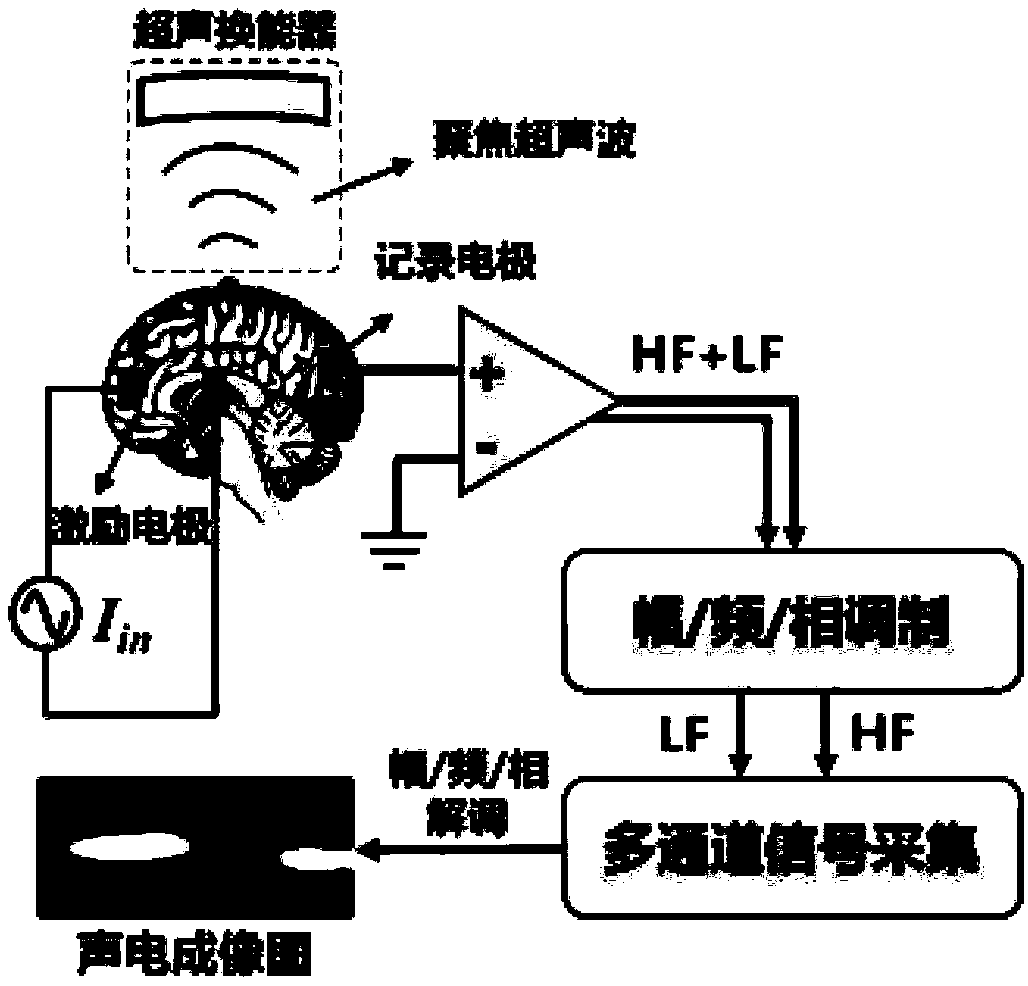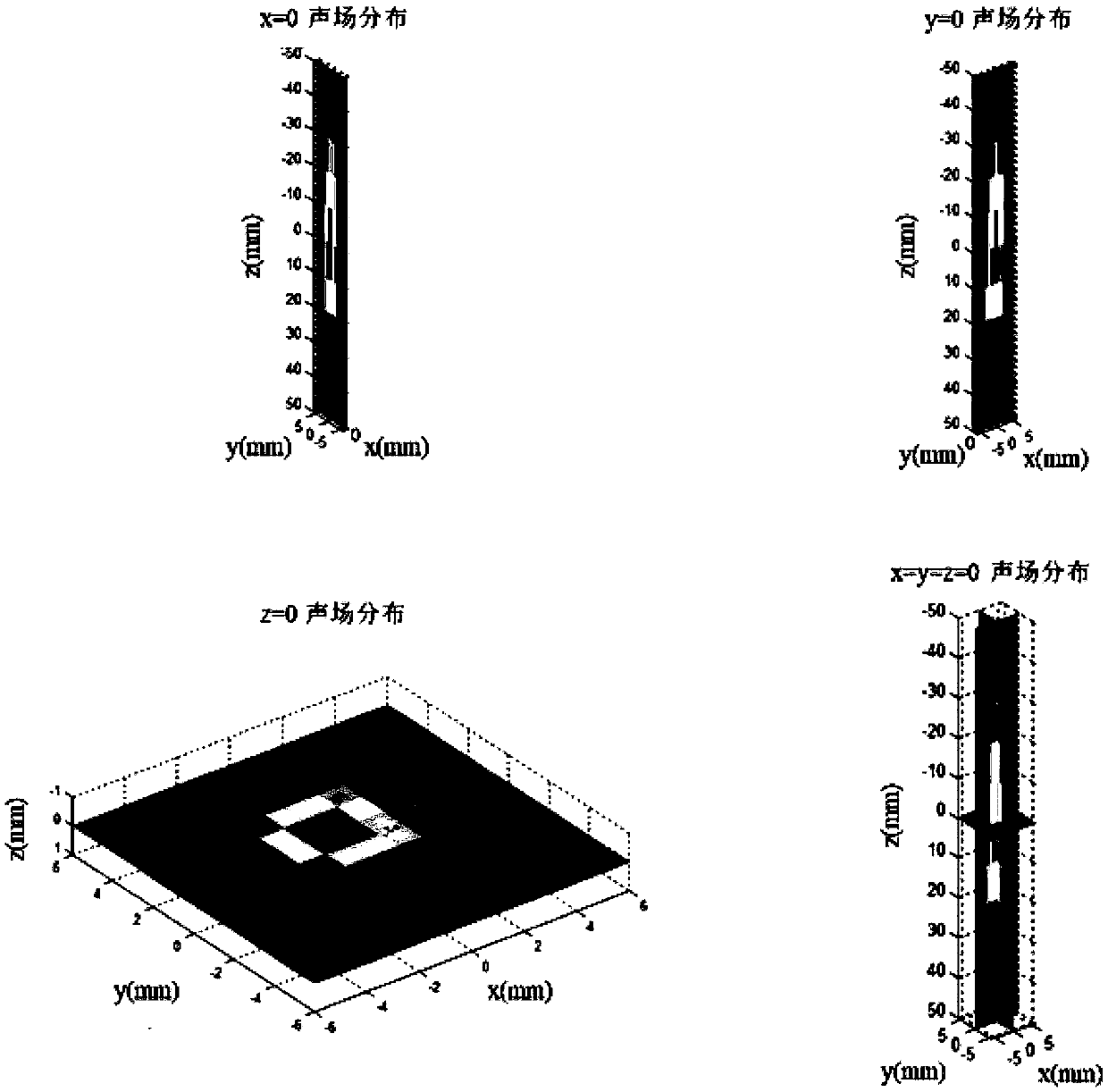4D transcranial focused ultrasonic neuroimaging method based on acoustoelectric effect
A technology of focused ultrasound and acoustoelectric effect, which is applied in the field of neurological functional imaging, can solve the problems of limited resolution and positioning accuracy, monitoring deep brain function, and it is difficult to have both high time and high spatial resolution, so as to overcome spatial resolution. Low rate, improved time resolution and spatial resolution, considerable social and economic benefits
- Summary
- Abstract
- Description
- Claims
- Application Information
AI Technical Summary
Problems solved by technology
Method used
Image
Examples
Embodiment 1
[0037] A 4D transcranial focused ultrasound neuroimaging method based on acoustoelectric effects, see figure 1 , the method includes the following steps:
[0038] 101: Use a focused ultrasound signal generator and a transducer to realize the generation and emission of focused ultrasound signals, and determine the characteristics of focused ultrasound under different parameters;
[0039] 102: Install and connect neuroelectric signal acquisition equipment consisting of EEG electrodes, EEG amplifiers, EEG filter EEG acquisition systems, and neuroelectric signal measurement systems based on ultrasonic modulation;
[0040] 103: Ultrasound propagates through the cranium and focuses on a certain position. Based on the principle of acoustic-electric effect, the scalp EEG signal modulated by ultrasound is collected, that is, the acoustic-electric signal;
[0041] 104: Through the amplitude, frequency, and phase correlation of the acoustic-electric signal and the activation source sign...
Embodiment 2
[0044] The scheme in embodiment 1 is further introduced below in conjunction with calculation formula and examples, see the following description for details:
[0045] The acoustoelectric effect is a basic physical phenomenon of electrical modulation by ultrasound, and it is also the physical basis of acoustoelectric imaging. Specifically refers to: when focused ultrasonic waves pass through biological fluids or tissues, local (focused area) conductivity changes (determined by the frequency of ultrasonic waves).
[0046] Such as formula (1), σ 0 is the original resistivity, Δσ is the change of tissue resistivity caused by the change of ultrasonic sound pressure ΔP, k is the acoustic-electric interaction coefficient, for example, the acoustic-electric interaction coefficient in rabbit heart tissue is 0.041±0.012% MPa-1.
[0047] Δσ = kσ 0 ΔP (1)
[0048] The acoustoelectric effect shows that tissue resistivity modulation is most pronounced in the focused region of the ultras...
PUM
 Login to View More
Login to View More Abstract
Description
Claims
Application Information
 Login to View More
Login to View More - R&D
- Intellectual Property
- Life Sciences
- Materials
- Tech Scout
- Unparalleled Data Quality
- Higher Quality Content
- 60% Fewer Hallucinations
Browse by: Latest US Patents, China's latest patents, Technical Efficacy Thesaurus, Application Domain, Technology Topic, Popular Technical Reports.
© 2025 PatSnap. All rights reserved.Legal|Privacy policy|Modern Slavery Act Transparency Statement|Sitemap|About US| Contact US: help@patsnap.com



